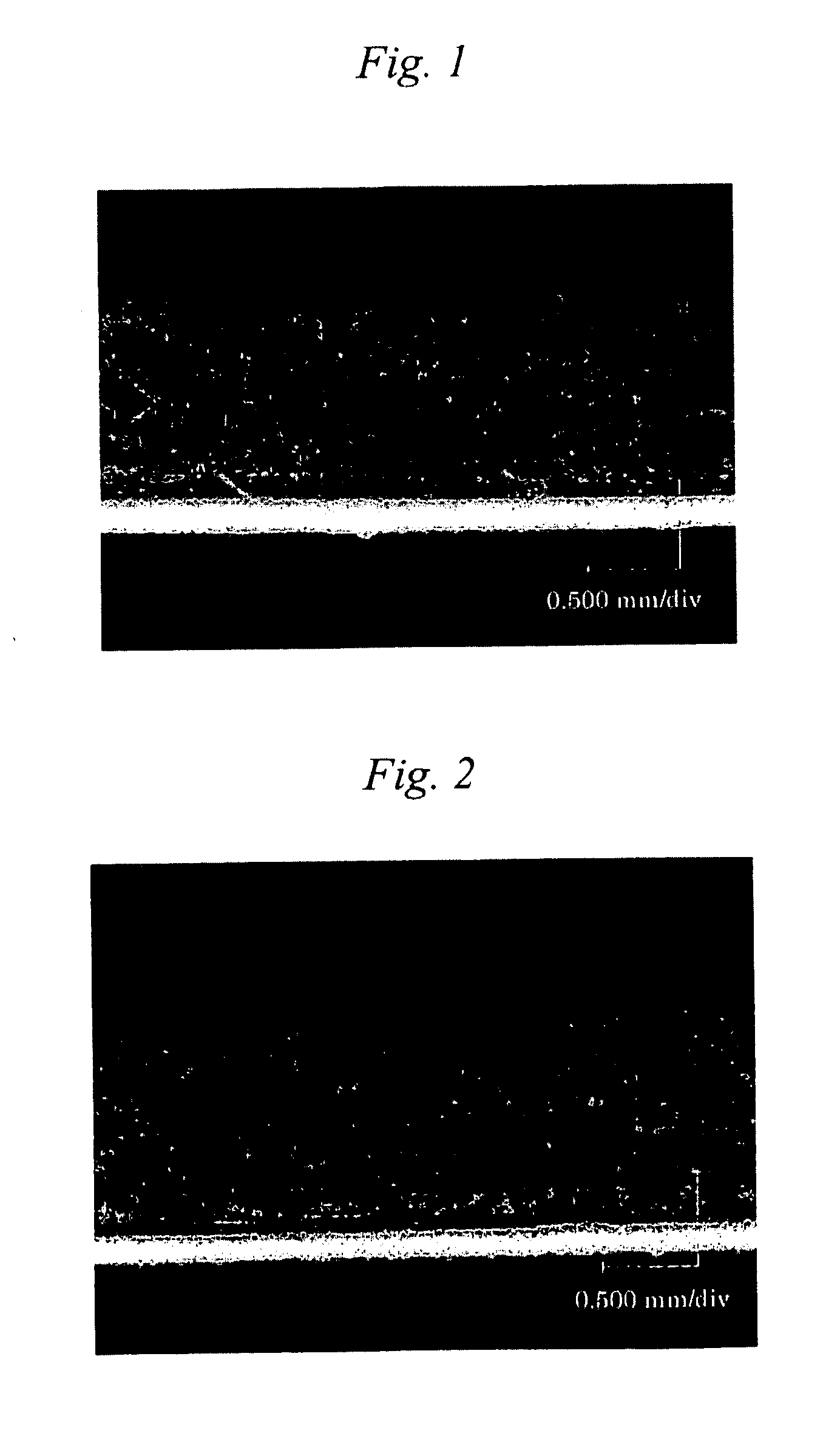Polyolefin resin foam and process for production thereof
a polyolefin resin and foam technology, applied in the field of polyolefin resin foam, can solve the problems of gas escape and cell linkage, difficult to obtain a soft foam with the desired high expansion ratio, and insufficient flexibility and cushioning properties of foams, etc., to achieve excellent shape processing at the time of punching processing, improve processability and flexibility, and improve compatibility
- Summary
- Abstract
- Description
- Claims
- Application Information
AI Technical Summary
Benefits of technology
Problems solved by technology
Method used
Image
Examples
example 1
[0094]Fifty-five parts of a thermoplastic elastomer composition (a blend (TPO) of polypropylene (PP) and ethylene / propylene / 5-ethylidene-2-norbornene ternary copolymer (EPT) (containing 16.7% by weight of carbon black)), 45 parts of polypropylene, 10 parts of a lubricant (a master batch obtained by blending 10 parts of polyethylene with 1 part of stearic acid monoglyceride), 10 parts of a nucleant agent (magnesium hydroxide) and 3 parts of erucamide were kneaded by a twin-screw extruder at a temperature of 200° C., and then, extruded in strand form. After water cooling, the extruded product was cut in pellet form and molded. The pellets were placed into a single-screw extruder, and carbon dioxide was injected thereinto in an atmosphere of 220° C. under a pressure of 14 MPa (after injection: 18 MPa). After sufficient saturation with carbon dioxide, the pellets were extruded through a die to obtain a sheet-shaped foam (thickness: 2.0 mm).
example 2
[0095]Fifty-five parts of a thermoplastic elastomer composition (the same as in Example 1), 45 parts of polypropylene (the same as in Example 1), 10 parts of a lubricant (the same as in Example 1), 10 parts of a nucleant agent (the same as in Example 1) and 3 parts of behenic acid were kneaded by a twin-screw extruder at a temperature of 200° C., and then, extruded in strand form. After water cooling, the extruded product was cut in pellet form and molded. The pellets were placed into a single-screw extruder, and carbon dioxide was injected thereinto in an atmosphere of 220° C. under a pressure of 14 MPa (after injection: 18 MPa). After sufficient saturation with carbon dioxide, the pellets were extruded through a die to obtain a sheet-shaped foam (thickness: 2.0 mm).
PUM
| Property | Measurement | Unit |
|---|---|---|
| melting point | aaaaa | aaaaa |
| temperature | aaaaa | aaaaa |
| melt tension | aaaaa | aaaaa |
Abstract
Description
Claims
Application Information
 Login to View More
Login to View More - R&D
- Intellectual Property
- Life Sciences
- Materials
- Tech Scout
- Unparalleled Data Quality
- Higher Quality Content
- 60% Fewer Hallucinations
Browse by: Latest US Patents, China's latest patents, Technical Efficacy Thesaurus, Application Domain, Technology Topic, Popular Technical Reports.
© 2025 PatSnap. All rights reserved.Legal|Privacy policy|Modern Slavery Act Transparency Statement|Sitemap|About US| Contact US: help@patsnap.com

